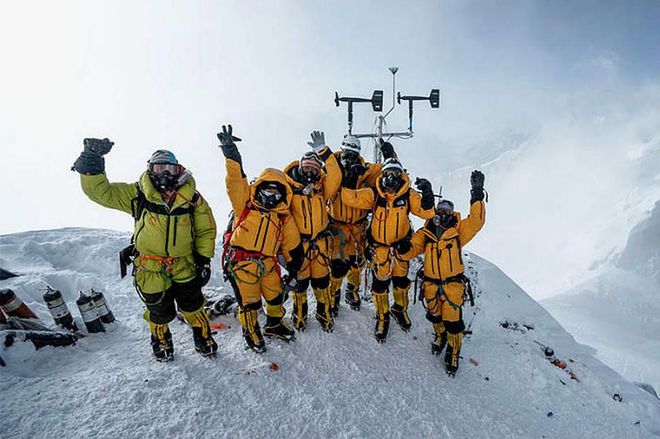How Rolex Is Saving The World With National Geographic
"Exploration is the DNA of Rolex"


Members of the multidisciplinary team pose for a portrait after successfully installing weather stations on Mt Everest. Photo: Courtesy of the National Geographic Society
Members of the multidisciplinary team pose for a portrait after successfully installing weather stations on Mt Everest.
Rolex is at it again showing us how it is more than a luxury watch brand but a forerunner of environmental exploration and conservation.
The company has long been supporting a myriad of environmentalists such as leading ocean explorer and researcher Sylvia Earle, and more recently, conservation biologist Erika Cuéllar, and her ambitious plan to protect the extraordinary biodiversity of one of South America’s last truly wild environments. Rolex is passionately continuing their efforts—this time, aiming higher.
Last week on Mount Everest, Rolex funded a team of scientists, climbers, and explorers, led by National Geographic and Tribhuvan University, that built the world’s tallest weather station.
This expedition is the latest fruit reaped from the long-time partnership between Rolex and National Geographic that supports pioneering individuals and organizations research environmental issues and climate change.
The meticulously constructed 2.10m tall, 50kg structure that sits on the roof of the world at 8,850m—otherwise known as the Death Zone—is one of the two stations that were put into place on this expedition, and is a part of what will be a network of six stations that provide scientists with data on winds that affect everything globally from storm tracks to agriculture growing seasons.
Perched upon a tiny outcrop of rock found atop the Himalayan glaciers, the weather station will prove crucial to climate change research as increasing global temperatures have caused this critical water resource to 1 billion people to disappear at an alarming rate. With field science having never been done above 2,133.6meters (or 7,000 feet), Jonathan Baillie, executive vice president and chief scientist at the National Geographic Society says that the weather station “will fill critical data gaps on the world's life support systems and drive solutions to assure that they can continue to fuel our future.”

A member of the Perpetual Planet extreme expedition at Khumbu Icefall, Mount Everest.Photo: Courtesy of National Geographic
A member of the Perpetual Planet extreme expedition at Khumbu Icefall, Mount Everest.
On top of this incredible feat, the multidisciplinary group of scientists also collected hundreds of water, snow, and rock samples—even installing sensors to record vegetation growth, using high-resolution laser technology to survey the area, and drilling for ice cores.
This year, under the name “Perpetual Planet Extreme Expeditions,” Rolex and National Geographic are taking things to new heights (and depths) and launching a five-year exploration of the planet’s most extreme environments, having this expedition kick off the series.
By installing cutting-edge technology and studying how human activity elsewhere is affecting these almost inaccessible and least-observed regions, Rolex and National Geographic believe it is one step closer to saving and preserving Earth’s water towers, lungs, and thermostat—otherwise respectively known as Earth’s mountains, rainforests, and oceans.
Related articles:
This Is How Monaco Is Going Green
Prince Harry Shows His Support For A Trans Children’s Charity
Victoria Beckham Is Set To Host A Charity Fashion Show